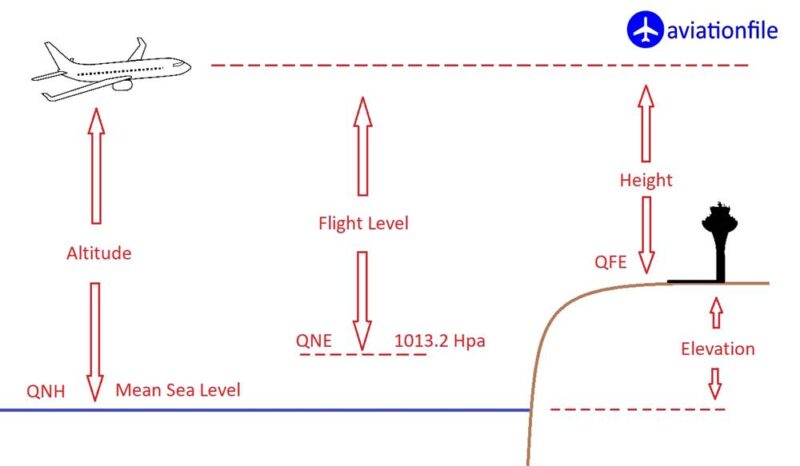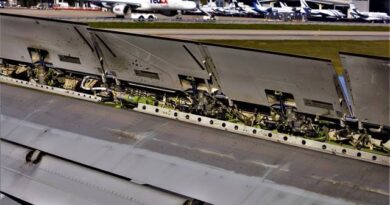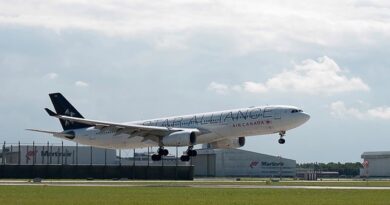MOCA – Minimum Obstacle Clearance Altitude: The Definitive Guide
The Minimum Obstacle Clearance Altitude (MOCA) is a crucial term in aviation. It ensures that aircraft maintain a safe altitude above terrain and obstacles while flying on instrument flight rules (IFR) routes. In this definitive guide, we will explore what MOCA is, its purpose, how it’s used, and why it matters for pilots.
What is MOCA?
MOCA stands for Minimum Obstacle Clearance Altitude. It is the lowest altitude on a specific segment of an IFR route that guarantees obstacle clearance. MOCA ensures that aircraft maintain enough altitude to avoid mountains, buildings, towers, and other potential hazards on the flight path.
Key Points:
- MOCA guarantees a minimum of 1,000 feet obstacle clearance in non-mountainous areas.
- In mountainous regions, MOCA provides 2,000 feet of clearance.
- It applies to airways, routes, and certain off-route segments.

Purpose of MOCA
The primary purpose of MOCA is safety. It protects aircraft from colliding with obstacles. This is especially critical when pilots are flying through poor weather or in low visibility conditions. MOCA is particularly important in mountainous terrain where obstacles are higher and harder to detect visually.
How MOCA is Used in Aviation
Pilots refer to MOCA while flying on airways. MOCA is depicted on aeronautical charts. The value of MOCA helps pilots understand the lowest altitude they can fly while maintaining obstacle clearance.
However, there are two additional terms often used alongside MOCA:
- Minimum Enroute Altitude (MEA): This is the lowest altitude for which adequate navigation signals and obstacle clearance are guaranteed along an airway.
- Minimum Reception Altitude (MRA): The altitude where reliable navigation signals can be received.
MOCA ensures obstacle clearance, but it may not always guarantee reliable navigation signals throughout the flight path.
Example:
On aeronautical charts, you might see a route segment marked with both an MEA and MOCA. If the MOCA is lower than the MEA, pilots can descend to the MOCA if navigation signals are confirmed. This allows greater flexibility while still ensuring safety.
How MOCA is Determined
The Federal Aviation Administration (FAA) and other aviation authorities worldwide calculate MOCA based on terrain data and obstacle locations. They map out the route and determine the lowest altitude that provides sufficient clearance from potential hazards. For IFR operations, these calculations are crucial, especially in regions with varied terrain.
Importance of MOCA in IFR Flights
MOCA plays a significant role in Instrument Flight Rules (IFR) flights. Pilots flying under IFR cannot rely on visual cues to avoid obstacles, particularly in bad weather, at night, or through thick clouds. The MOCA gives them the assurance that, as long as they remain above this altitude, they are clear of obstacles along their flight path.
Key Benefits of MOCA:
- Safety: MOCA ensures aircraft avoid terrain and obstacles.
- Operational Flexibility: MOCA allows for lower altitudes than MEA if navigation signals permit.
- Efficiency: Pilots can fly at a more fuel-efficient altitude without compromising safety.
MOCA vs. MEA: What’s the Difference?
While MOCA and MEA are both used to ensure safety, they serve slightly different purposes:
- MOCA guarantees obstacle clearance but may not ensure full navigation signal reception.
- MEA ensures both obstacle clearance and reliable navigation signals.
In simple terms, MOCA focuses on avoiding physical hazards, while MEA also accounts for maintaining a strong navigation signal along the route.
Example Scenario:
A flight is navigating an airway over a mountainous region. The MEA is 10,000 feet, while the MOCA is 8,000 feet. If navigation signals are confirmed at 8,000 feet, the pilot may choose to descend to MOCA, knowing the aircraft is safe from obstacles. However, if navigation signals are lost, the pilot must climb back to MEA to regain the signal.
Where to Find MOCA
MOCA values are displayed on enroute IFR charts. These charts indicate the altitudes along various routes to help pilots plan their flights. MOCA is typically indicated as a number next to the route segment, often in smaller text beneath the MEA.
Example Chart:
- An airway may list an MEA of 12,000 feet and a MOCA of 9,500 feet.
- This shows that while 12,000 feet is the preferred altitude for navigation and obstacle clearance, pilots may fly as low as 9,500 feet while still maintaining obstacle clearance.
Conclusion
MOCA is a vital safety measure in aviation, providing minimum clearance over obstacles along IFR routes. Pilots rely on MOCA to ensure safe navigation, especially in challenging conditions. By understanding and adhering to MOCA, pilots can ensure they maintain a safe flight path, even when visibility and navigation signals are compromised.
Incorporating MOCA into flight planning enhances safety and operational flexibility. Whether you’re a seasoned pilot or an aviation enthusiast, knowing what MOCA is and how it’s used can deepen your understanding of air navigation safety measures.


